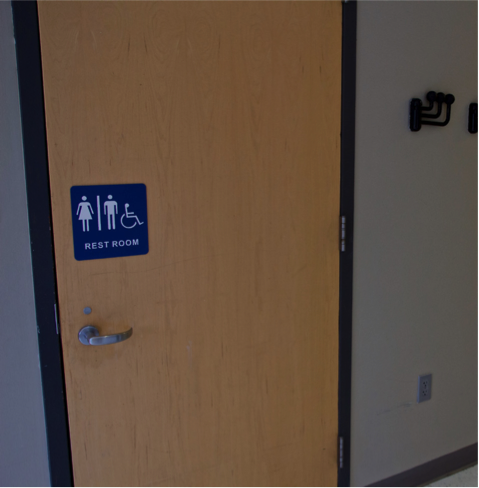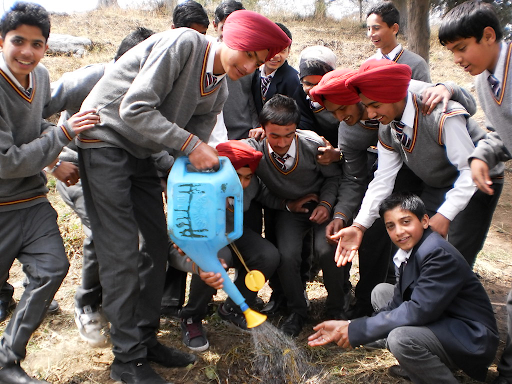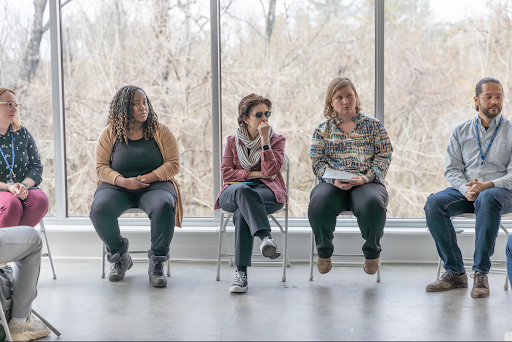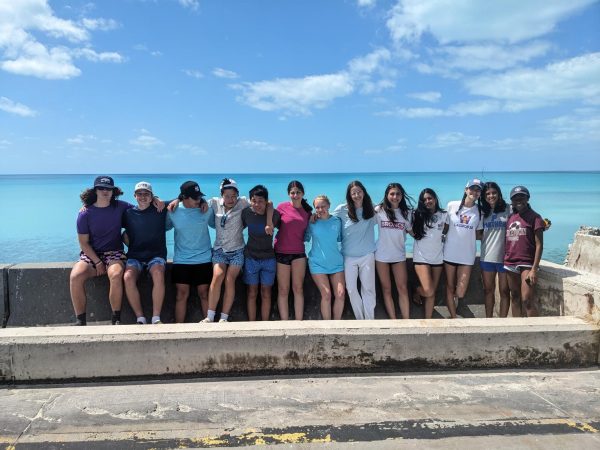PDS Bathrooms Transcend Gender
August 15, 2015
Unisex restrooms have been introduced at Princeton Day School in what resembles a milestone for the PDS community as it moves toward an era of gender equality. Unisex restrooms are restrooms that can be freely used by people of any gender or gender identity. Unisex public toilets grant basic human rights for those who identify outside of the gender binary: masculine or feminine. These gender- neutral restrooms, that are located behind the Snack Bar in the Campus Center, are designed to eradicate discrimination for members of gender minorities, as well as provide universal privacy regardless of one’s gender.
Senior Michael Kearney was instrumental in leading a group of students to convince the Upper School administration to change the signs of these two restrooms. He describes members of the group as individuals who “considered themselves anonymous,” and “approached [Dean of Students Elizabeth Monroe] with the idea”. The group then worked with Head of Upper School Jason Robinson to get the idea approved and ensure that the process ran smoothly.
“I was actually very surprised. It happened really quickly,” said Kearney. The gender-neutral signs were hung on the doors of the Campus Center restrooms in late March, less than two months after he began working on the project.
“I was concerned [about the safety] of transgender people, or gender non-conforming people, who do not feel safe in the gender-segregated restrooms. Transgender people often experience violence in traditional bathrooms,” explained Kearney. “And, although that isn’t much of a concern at PDS, gender non-conformists can have difficulty using bathrooms comfortably.”
GLOW (Gay, Lesbian, or Whatever) Co-head junior Emma Shainwald believes the creation of these restrooms are a step in the right direction regarding LGBTQ+ (Lesbian, gay, bisexual, transgender, queer plus) awareness at PDS: “I think unisex restrooms are great because they include people who aren’t comfortable with going into traditional ‘boy’ or ‘girl’ bathrooms. “The restrooms also make the school safer because students who are [transexual] and wouldn’t normally feel safe in regular bathrooms, can go there instead,” said Shainwald.
Shainwald, however, pointed out certain drawbacks to the protocols of the gender-neutral restrooms at PDS: “The only problem is that the signs [of the restrooms] still traditionally depict ‘men’ and ‘women’, which reinforces the gender binary and excludes non-binary people.” Because those who identify as non-binary are located outside the realm of men and women, she added, “The restrooms don’t feel as open to the community.” Kearney agreed: “I wouldn’t call it a problem, but one issue with the signs has to do with them showing respective figures dressed in pants and dresses. This still implies that the [washrooms] are for men and women separately, and [my goal] for this project was to ensure that these bathrooms are for everyone in the community to use.”
Gender-neutral washrooms have experienced a recent growth on college campuses across the United States. A study from The Stonewall Center, an LGBTQ/ A+ organization at the University of Massachusetts, Amherst, found that there are 150 college campuses across the United States that have created gender- neutral restrooms. The degrees to which these colleges and universities impose these restrooms, however, vary from campus to campus. At Illinois State University, for example, “all family” restrooms on campus have, since July 2014, been re-labeled as “all-gender” in an effort to have an inclusive environment. Northwestern University, however, gradually implemented just two gender-neutral stalls at its Norris University Center last summer.
The unisex restroom signs at the Campus Center have raised questions regarding future plans for LGBTQ+ awareness in the PDS community.
According to Shainwald, individuals can help by “not making assumptions about one’s sexuality or gender, because not everyone is straight.” She also said that as a community, we can “continue having discussions about sexuality and hear more about others’ identities at clubs such as GLOW. Discussion is key.” Kearney spoke of bringing back speakers such as PDS alumnus Robert Powell, who spoke with students last year to discuss his experiences as a closeted, gay teenager: “Powell changed the environment for the gay, lesbian, and bisexual communities at PDS.” Kearney suggested, “It would be great to see the administration host an assembly or workshop having to do with LGBTQ+ issues, so faculty can be more educated on how to accommodate those students academically.
The unisex bathrooms in the Campus Center have received positive reception among students. GLOW member junior Eris Gee referred to the addition as a “thoughtful and inclusive addition” to the Upper School, and she praised the administration for “considering students and visitors who may not fall into the traditional category of ‘male’ or ‘female’.”
In all, Gee regarded the topic of gender minorities as one “severely overlooked” at PDS, but, with the new unisex bathrooms and clubs such as GLOW and SAFE (Student Association for Everyone), awareness will continue to grow as we learn to be more LGBTQ+ conscious as a community.

















